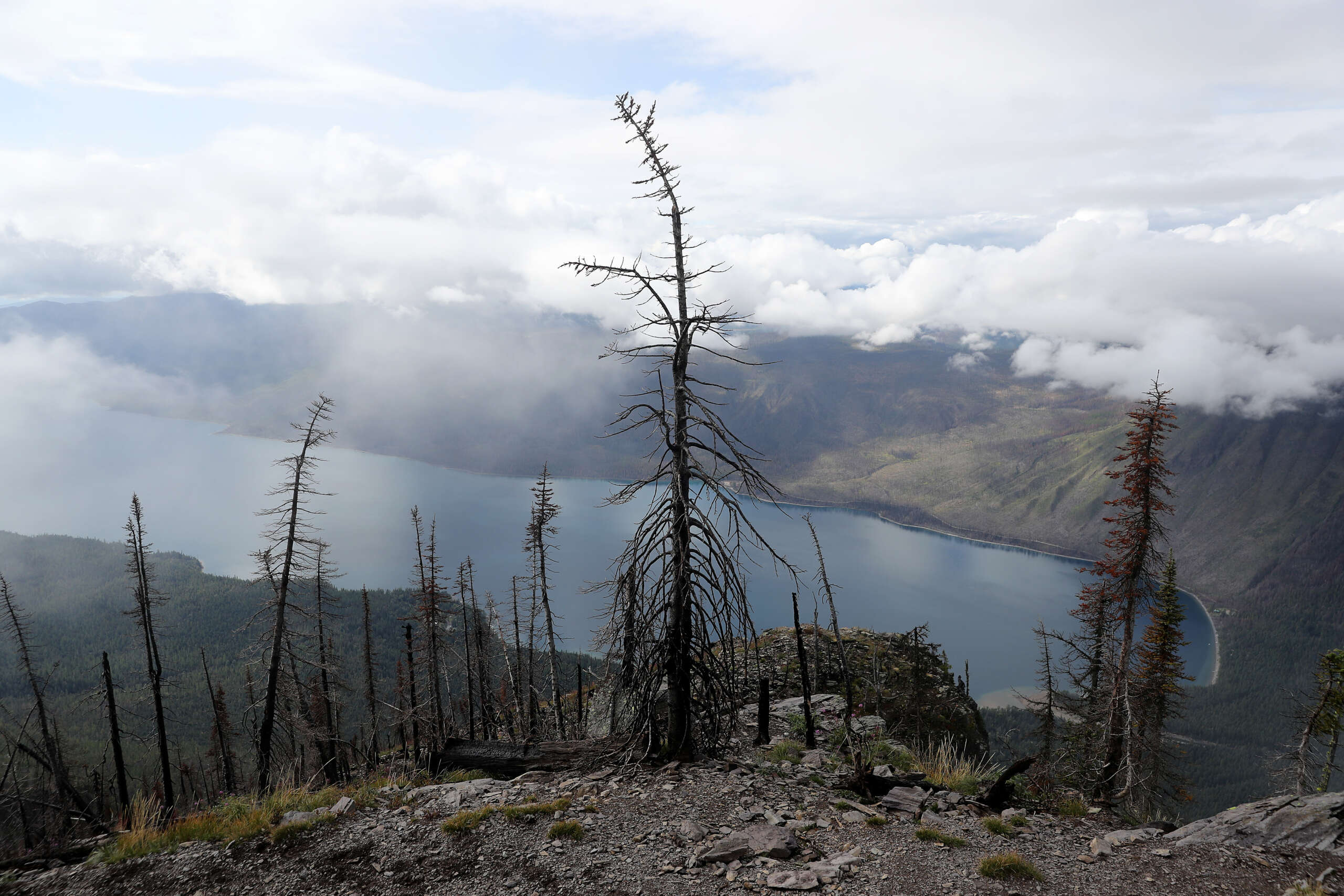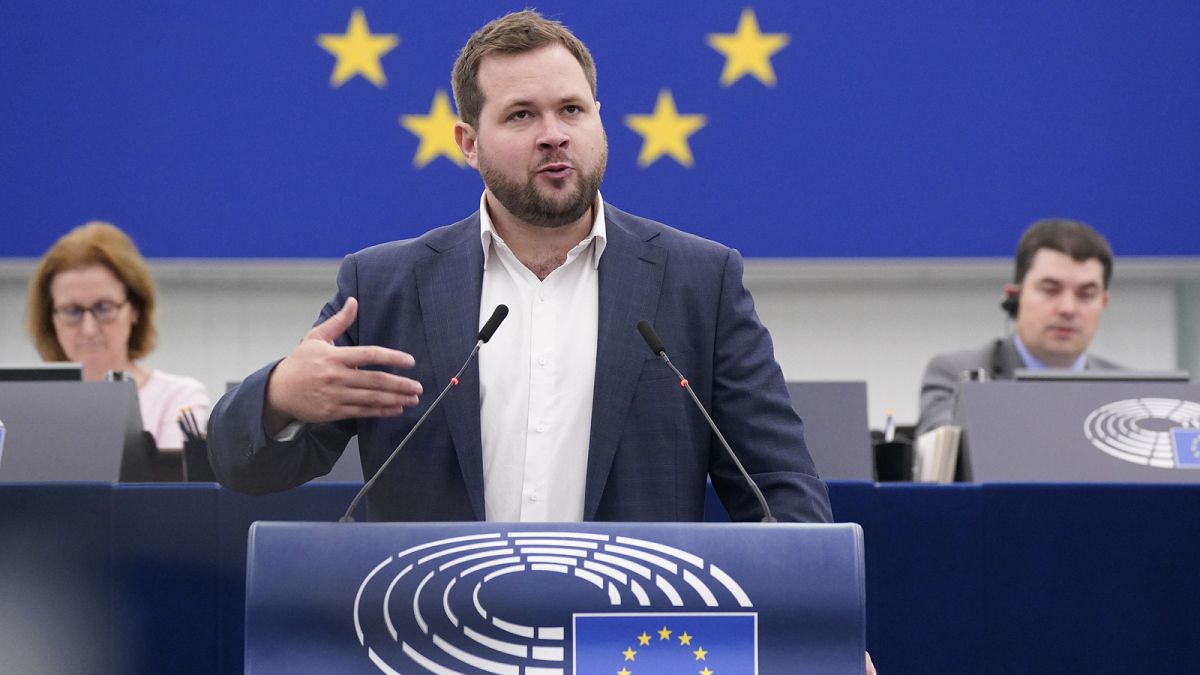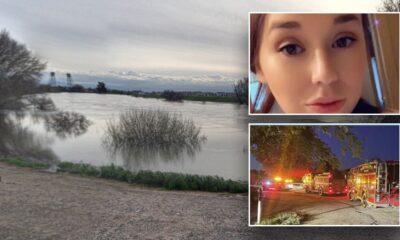Part of the Series
Human Rights and Global Wrongs
In a case that could have far-reaching implications for the struggle against the climate crisis, the trial in a lawsuit brought by a group of youth plaintiffs will begin in Montana on June 12. Besides being the first such case about climate change to go to trial, Held v. Montana involves the specific impacts the climate crisis has on young people.
This trial is a bellwether for other cases throughout the United States. Mat dos Santos, general counsel for Our Children’s Trust, which represents the youth plaintiffs, said that the lawsuit “is not just about Montana. It’s really about the climate here in the United States and around the world.” If this suit is successful, it would be a “watershed moment” that could lead to a “cascade of legal victories around the country,” dos Santos added, and would likely have global implications.
In 2020, 16 youths who were then between 2 and 18 years of age filed a complaint against the State of Montana, its governor and other state officials. The youth plaintiffs, as they are referred to in the case, maintain that they have been and will continue to be harmed by the dangerous effects of fossil fuels and the climate crisis.
Their 104-page complaint alleges, “Children are uniquely vulnerable to the consequences of the climate crisis, which harms Youth Plaintiffs’ physical and psychological health and safety, interferes with family and cultural foundations and integrity, and causes economic deprivations.” The crisis is “degrading and depleting Montana’s unique and precious environment and natural resources, which the Youth Plaintiffs depend on for their safety and survival.” The complaint adds that youth are “disproportionately harmed” and face “life-long hardships” as a result of climate change.
Montana, which has the nation’s largest coal reserves, has warmed more than most of the contiguous states in the U.S. because northern latitudes heat faster, the complaint says. Due to the warming climate, Montana’s snowpack has been decreasing and is likely to continue decreasing with rising temperatures. Wildfires — which impact ecosystems, property and livelihoods — are expected to get significantly worse unless immediate steps are taken to limit global heating.
Montana’s average temperatures have increased almost 2.5 degrees since the beginning of the 20th century, which is more than twice the global average.
The complaint states, “Fossil fuel extraction and combustion and the resulting climate crisis harms public health and welfare and is already contributing to an increase in asthma, cancer, cardiovascular disease, stroke, heat-related morbidity and mortality, food-borne diseases, and neurological diseases and disorders” as well as in the occurrence of infectious diseases.
Doctors and leading medical institutions recognize the climate crisis as a “health emergency,” the complaint adds. It cites findings of the Environmental Protection Agency that all children, even those who don’t have pre-existing illnesses, are considered a “sensitive population” to the effects of the climate crisis as their bodies are still developing.
The complaint characterizes psychological harms from the climate crisis as “acute and chronic,” pointing out that these harms are accrued by heat waves, wildfires, drought conditions, air pollution, violent storms, loss of wildlife, watching glaciers melt, and loss of familial and cultural foundations and traditions. The psychological health effects for children include higher levels of anxiety, depression, post-traumatic stress disorder, substance abuse, increased rates of suicide, violence and “a distressing sense of loss.”
In addition, the complaint notes, childhood exposure to climate disruptions and air pollution may lead to “impaired physical and cognitive development with life-long consequences.” Children with pre-existing medical conditions, as well as those who are economically disadvantaged or from minority populations, including Indigenous peoples, are “especially vulnerable” to climate change impacts and air pollution.
Montana’s Constitution Enshrines the Right to a Clean and Healthful Environment
Montana is one of three states in the United States that enshrines the right to a healthy environment in its state constitution. Pennsylvania and New York have similar constitutional protections and at least nine other states are considering following suit in 2023.
Article II, Section 3 of the Montana Constitution states, “All persons are born free and have certain inalienable rights. They include the right to a clean and healthful environment . . .” Further, Article IX, Section 1 (1) says, “The state and each person shall maintain and improve a clean and healthful environment in Montana for present and future generations.”
The youth plaintiffs … maintain that they have been and will continue to be harmed by the dangerous effects of fossil fuels and the climate.
Article IX, Section 1(3) obligates the legislature to provide “adequate remedies for the protection of the environmental life-support system from degradation.” The complaint quotes the comments of a delegate to Montana’s 1972 Constitutional Convention, who said that “the term ‘environmental life support system’ is all-encompassing, including but not limited to air, water, and land.”
Article IX, Section 3(3) provides, “All surface, underground, flood, and atmospheric waters within the boundaries of the state are the property of the state for the use of its people and are subject to appropriation for beneficial uses as provided by law.” The Montana Supreme Court has construed this provision as underpinning the “Public Trust Doctrine” for water rights, including atmospheric waters, under the Montana Constitution. Public Trust Resources in Montana also include fish and wildlife, public lands, wetlands, submerged lands and water banks to the high-water mark.
The Public Trust Doctrine requires the defendants “to maintain control, protect, preserve, and prevent substantial impairment to and waste of Public Trust Resources for the benefit of all Montanans, including Youth Plaintiffs and future generations of Montanans,” the complaint states. Yet Montana has never denied a permit sought by a fossil fuel company.
Montana’s Supreme Court has held that any statute or rule that implicates the constitutional right to a clean and healthful environment must be strictly scrutinized and can only survive if the State establishes a “compelling state interest” and its action is “closely tailored” to achieve that interest and is the “least onerous path” available to accomplish that objective.
Montana’s State Energy Policy and MEPA Exception
In the lawsuit, the youth plaintiffs claim that the defendants “have created and implemented a long-standing fossil-fuel based state energy system that contributes to dangerous climate disruption.” The complaint alleges that Montana’s State Energy Policy and the climate change exception to the Montana Environmental Policy Act (MEPA) violate the youth plaintiffs’ constitutional rights. They are asking the court to declare that these two statutes violate the Montana Constitution.
The State Energy Policy explicitly promoted the use of fossil fuels. The exception to MEPA says that “an environmental review . . . may not include a review of actual or potential impacts beyond Montana’s borders. It may not include actual or potential impacts that are regional, national, or global in nature.” That means that the State can’t consider the impacts of climate change in their environmental reviews.
On March 16, in an attempt to get the youth plaintiffs’ lawsuit thrown out, the GOP-led Montana state legislature repealed the State Energy Policy and the defendants argued that the case was then moot. On May 23, Lewis and Clark County District Court Judge Kathy Seely dismissed the youth plaintiffs’ claims under the State Energy Policy.
But Judge Seely denied the defendants’ motion to dismiss the MEPA claims, writing that “there appears to be a reasonably close causal relationship between the State’s permitting of fossil fuel activities under MEPA, [greenhouse gas] emissions, climate change, and Plaintiffs’ alleged injuries.” She found that Montana has the authority to regulate greenhouse gas emissions and their impacts on climate by regulating the state’s fossil fuel activities.
The judge wrote that while Montana may not have the power to regulate out-of-state actions that burn Montana coal, it could take into consideration the effects of coal burning before it permits a new coal mine. “This Court cannot force the State to conduct that analysis, but it can strike down a statute prohibiting it,” Judge Seely noted.
Who Are the Youth Plaintiffs?
The 16 youth plaintiffs suffer a range of direct and indirect maladies as a result of the climate crisis. Here are some of them with their ages listed in the complaint, which was filed three years ago.
The complaint characterizes psychological harms from the climate crisis as “acute and chronic.”
The lead plaintiff is Rikki Held (18) who lives on a large ranch where her family raises cattle and grows crops. They rely on abundant snowfall but due to climate change, it no longer lasts through the winter, so there’s no runoff to water their livestock. Rising temperatures and drought conditions make it harder to hunt deer and elk. Rikki experiences stress and depression about the climate disruption and feels a heavy burden.
Lander B. (15) and Badger B. (12) hunt and fish, which provide an important food source for their family and an integral part of their cultural heritage and community. Abnormally low instream water levels and high water temperatures harm the fish. The increasing heat and dry smoke-filled air in the summer due to climate disruption have reduced Lander’s hunting opportunities. The climate crisis is “traumatic” for him. “The extreme temperatures and smoke make hunting unbearable for Lander,” the complaint says. Severe wildfires in Badger-Two Medicine, a local wilderness area from which Badger got his name, have degraded areas where Badger likes to visit and recreate. This was very distressing and had a “profound emotional impact” on him.
Sariel S. (17) lives on the Flathead Indian Reservation and is a member of the Confederated Salish and Kootenai Tribes. Climate change is imperiling her culture, food sources and spiritual activities. The lack of winter snowpack from climate disruption impacts her tribe’s fishing and recreation opportunities as well as traditional ceremonies. Sariel worries that climate change is threatening her chance and right to learn the traditional cultural practices and customs passed down for generations so she can pass them on. The climate crisis has had a profound emotional and psychological impact on her. She is stressed and “distraught when thinking about her future and if she will have one.”
Georgianna F. (“Georgi”) (17) is a competitive Nordic skier who trains 11 months each year and practices 15 hours each week, seven days a week. The lack of snow has prevented her from training to compete at a high level. Georgi is increasingly worried about long-term effects on her health and respiratory system of exposure to heavy smoke during training. She “has feelings of despair and hopelessness . . . she understands that snow and the sport may not exist in her future.”
Eva L. (14) enjoys exploring national parks and public lands and participating in outdoor activities. In summer 2017, wildfire smoke from several fires in Montana caused very poor air quality, harming Eva’s health and security. She suffered from eye and nose irritation, sore throat and headaches. In 2018, the rivers, tributaries and streams near her home flooded as higher than average temperatures rapidly melted the snowpack. Because they couldn’t access the bridge and nearby town and due to increased hardship and stress, Eva’s family sold their home and relocated. Eva is anxious about how her family will adapt to worsening climate change and the devastation of public resources and infrastructure.
In the lawsuit, the youth plaintiffs claim that the defendants “have created and implemented a long-standing fossil-fuel based state energy system that contributes to dangerous climate disruption.”
Olivia B. (16) helped organize a climate strike in 2019. She has had exercise induced asthma since she was 13 and is particularly vulnerable to smoke-filled air. When the air is full of wildfire smoke, Olivia feels like she’s suffocating if she is outside for more than five minutes. She feels as though her lungs are closing up when she coughs from the smoke. Olivia has been “profoundly impacted by the climate crisis emotionally and psychologically.” She experiences bouts of depression and questions whether to have children. The climate crisis gives her a “heavy burden” to carry and she “feels heartbroken and desperate.”
Jeffrey K. (6) and Nathaniel (“Nate”) K. (2) both have respiratory issues. Jeffrey has pulmonary sequestration, making him “uniquely susceptible to respiratory complications.” Nate is sick frequently and has gone to the emergency room twice with difficulty in breathing. They are especially vulnerable to poor air quality including smoke-filled air from wildfires. They must remain indoors when the air is filled with wildfire smoke.
Ruby D. (11) and Lilian D. (9) are members of the Crow Tribe in Montana. Each year, they and their family travel to participate in traditional cultural and spiritual activities. The past two years have been abnormally wet, muddy and cold, making it harder to complete the dances and other events. These cultural practices “are central to their spirituality and individual dignity.” Ruby has asthma which makes her “uniquely vulnerable” to increased wildfire smoke.
Taleah H. (16) lives on the Flathead Indian Reservation. She enjoys ice skating but rising temperatures keep sufficient ice from forming. The increased wildfires prevented Taleah from recreating outdoors. She fears that worsening climate change will increase transmittable diseases between bison and other animals and the bison, about whom she cares deeply, will be lost.
The youth plaintiffs charge in their complaint that the defendants have abdicated control over “Public Trust Resources in favor of the short-term interests of private parties, authorizing those private parties to treat our atmosphere as a dump for their carbon emissions and profit off of developing Montana’s fossil fuel resources to the detriment of Youth Plaintiffs and future generations of Montanans.” That explains why the Republican officials in Montana are fighting so hard to throw this lawsuit out of court.
Historic Trial Is Scheduled for Mid-June
On June 6, the Montana Supreme Court rejected the defendants’ 11th hour petition for the extraordinary remedy of a writ of supervisory control, asking the state’s high court to dismiss the case. “Trial, with preparation literally years in the making, is set to commence less than a week from now; we are not inclined to disturb the District Court’s schedule at this juncture,” Montana’s Supreme Court wrote.
The two-week bench trial before Judge Seely (sitting without a jury) is scheduled to take place from June 12-23 in her Helena, Montana, courtroom.
See here for information about how to watch this historic trial.





























